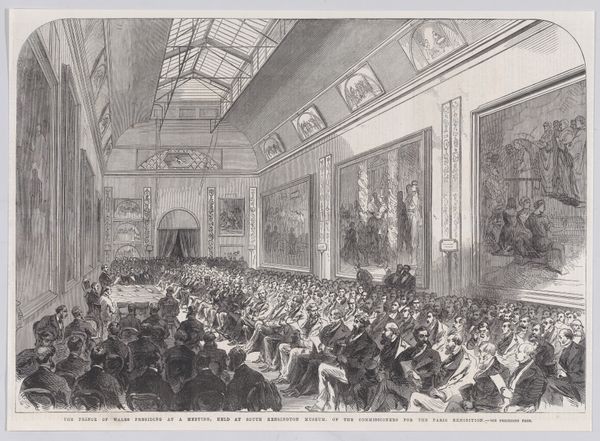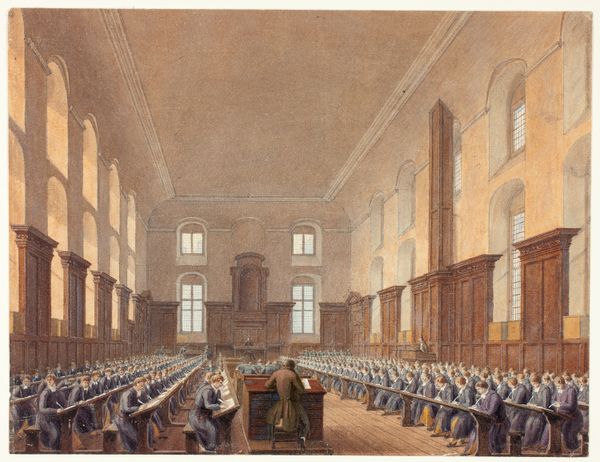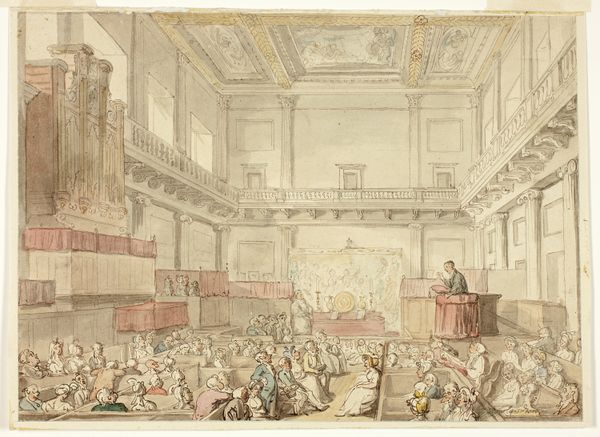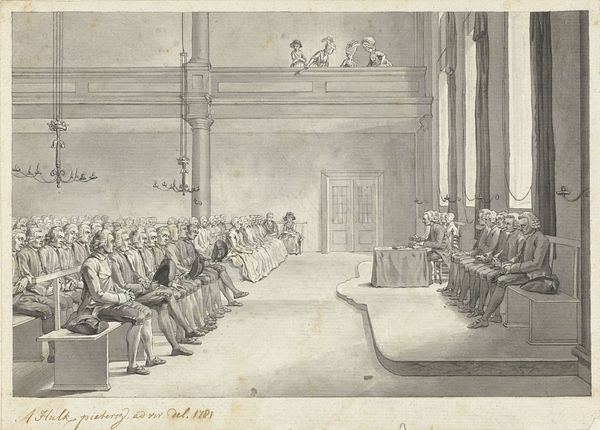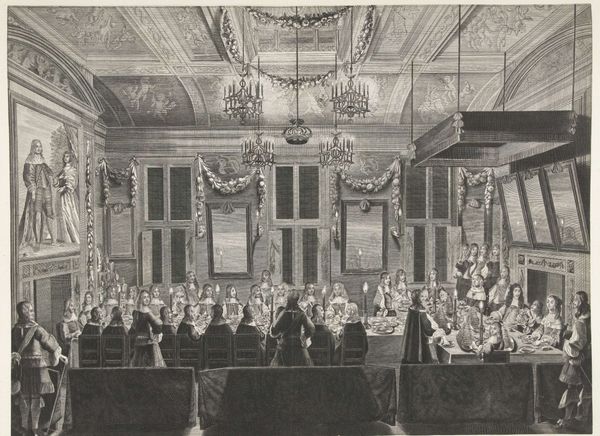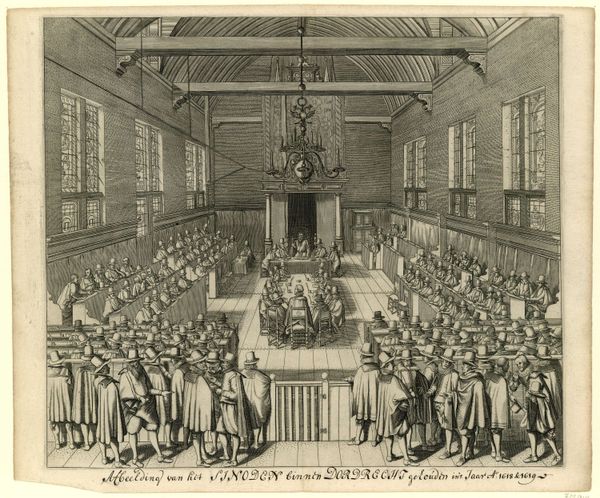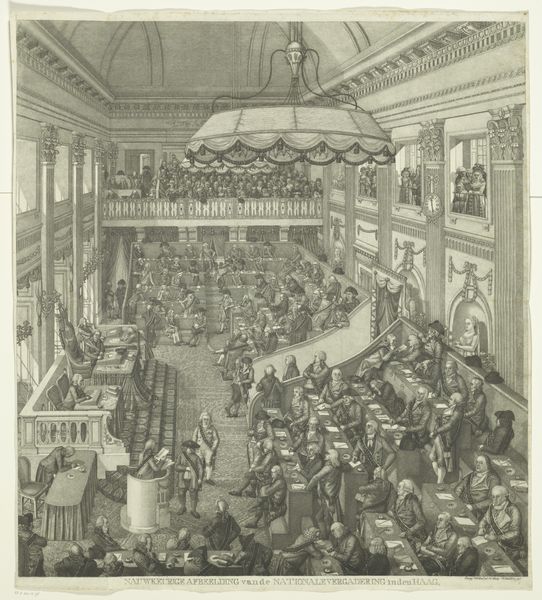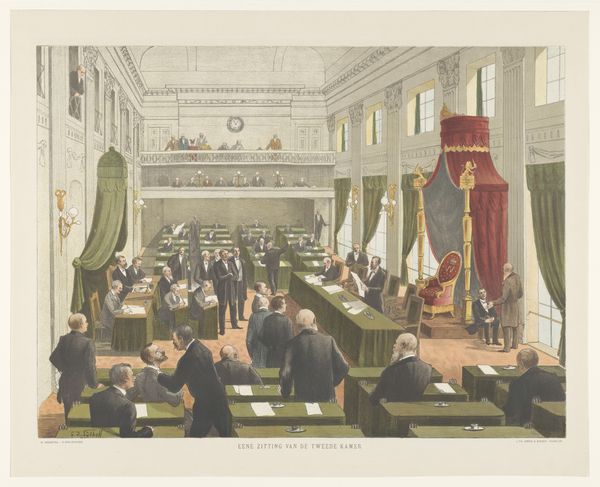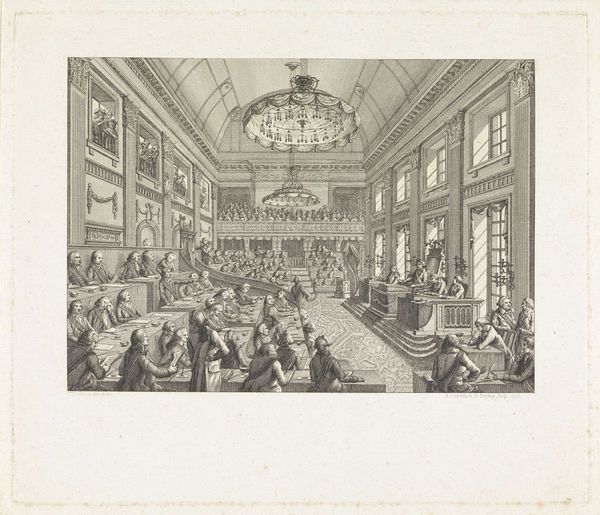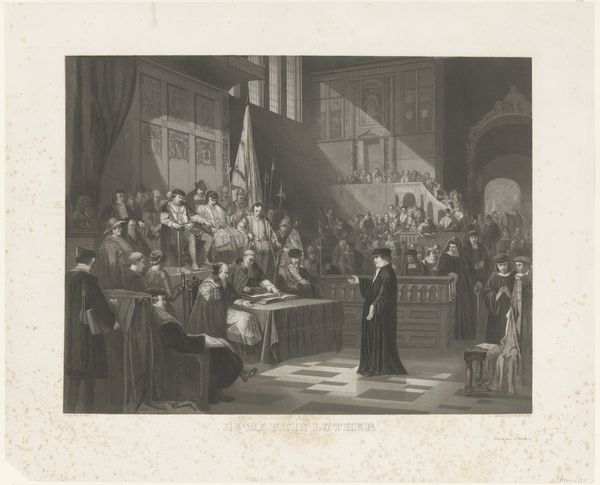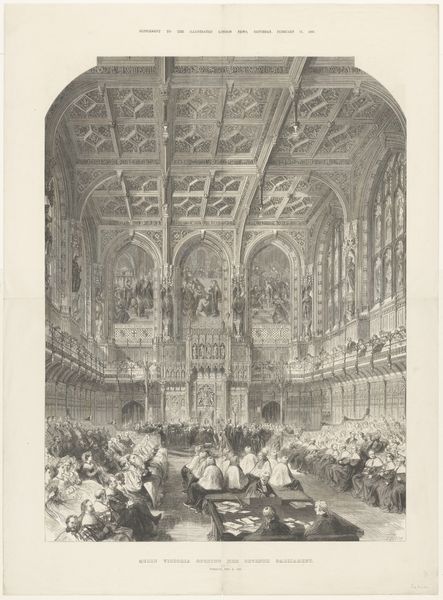
drawing, print, paper, ink, pen
#
drawing
# print
#
figuration
#
paper
#
ink
#
romanticism
#
pen
#
genre-painting
#
academic-art
Copyright: Public Domain
Curator: This drawing, rendered in pen and ink, offers a glimpse into a Quakers’ Meeting, created by Thomas Rowlandson between 1808 and 1810. The scene unfolds with meticulous detail within the meetinghouse's confines, now held at the Art Institute of Chicago. Editor: My first impression is one of incredible order and stillness. The pen and ink work lends a certain austere quality to the gathering. Curator: Absolutely. Quakers in that period sought simplicity, reflected not only in their attire but also in their spaces of worship. Rowlandson, while known for his satirical eye, seems to present this scene with respect, although, you might see the artist had an eye for a kind of understated commentary through slight exaggeration of forms. Editor: I notice the benches – simple, unadorned wood. They must have been crafted with local materials, a direct connection to the community's resources and labor. It's all about function, isn't it? The physical space facilitating communal experience. Curator: Exactly. This gathering, mostly women if you look, symbolizes much about the period's gendered expectations in terms of women's spiritual life. The arrangement, with its separate sections, possibly also reflected the social stratification of the time. And what of the very act of drawing and printing it? What statements does this capture for society at large? Editor: Well, Rowlandson's decision to depict this Quaker meeting via print makes it accessible. The materiality of print, the means of its production and distribution, allowed these images and arguably these social ideas to spread. This puts questions on the values and accessibility of this group in society and how it existed or differed. Curator: Considering how Quakers positioned themselves regarding issues of social justice and abolition, such representation could stir various emotions and even provoke discussion during a period marked by conflicts and inequalities. I wonder what an observer thought of these Quakers then versus now. Editor: Yes, the labor of making such a print, disseminating its ideas into homes and public places—it underscores the material conditions of communication and belief in that era. It offers insights into class, craft, and culture all in one. It seems as the observer you notice an abundance of plain hats! Curator: Precisely. Seeing this drawing in this light, it adds layers to understanding the relationship between art and social action then, as well as inspiring how it relates to discussions around cultural values and cultural criticism today. Editor: I agree. Investigating Rowlandson’s "Quakers' Meeting" using its physical components reveals the intertwined threads of artistry, material culture, and its social reverberations.
Comments
No comments
Be the first to comment and join the conversation on the ultimate creative platform.
